





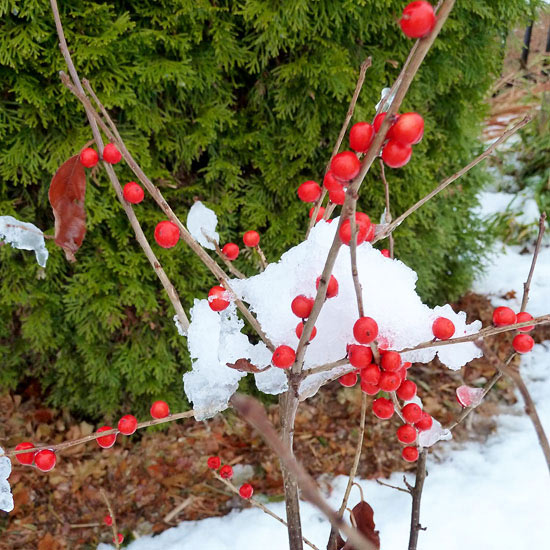
Jewels of the winter landscape, long-lasting berries are a delight to wildlife and humans. While some trees and shrubs produce fruit that is consumed as soon as it ripens, such as sweet cherries, other plants produce persistent fruit. This foodstuff is not the first choice for wildlife, but when other forage is scarce they rely on it to get them through the winter. Plants for winter interest and wildlife include dogwood, highbush cranberry, and other types of viburnums.
Browse shrubs with winter landscape interest.
continue reading below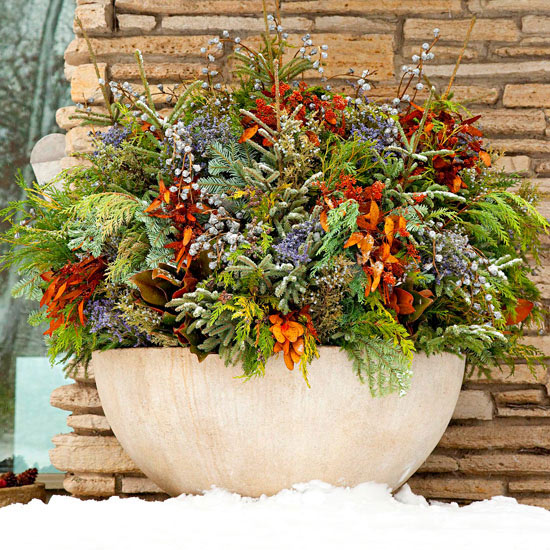
Use evergreen sprigs, colorful twigs, and dried perennials to create a winter wonderland in your containers. Begin by filling the container two-thirds full of sand. The sand will support the plants during winter. Take a walk through the garden, collecting branches and dried perennial stems. Ornamental grasses, evergreens of all sorts, and coneflowers are all striking in winter. Sink the cut stems into the sand and your container garden is ready for winter. No watering necessary!
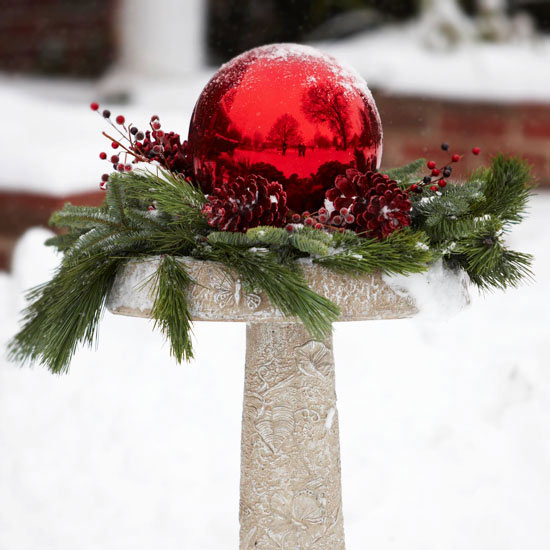
If you don't have a heater to maintain open water for wildlife in winter, transform your birdbath into a wintertime focal point. Evergreen bows and a massive red ornament make this once-forlorn birdbath come to life again.
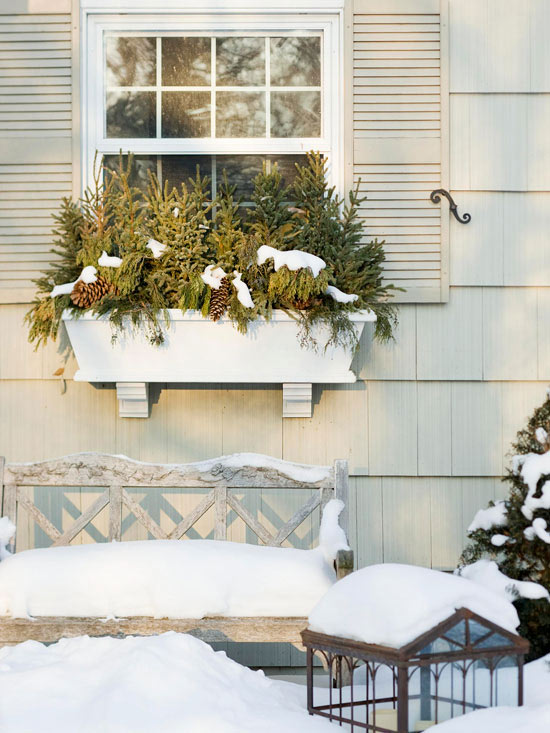
Evergreen branches and colorful twigs transform an empty window box into a pleasing winter scene. If evergreen branches are not readily available in your landscape, stop by your local florist. They often have a host of texture-rich evergreens in winter months.
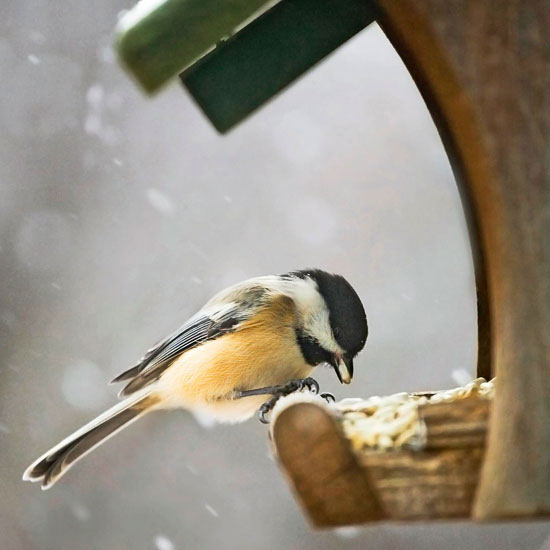
Winds might whip and temperatures might plummet but native songbirds must still forage for food to survive. Make life a little easier for them and enjoy their midwinter antics by stocking a bird feeder. Black oil sunflower seeds are the very best source of winter sustenance for the majority of birds that visit bird feeders. Avoid mixes that contain a high percentage of millet or oats.
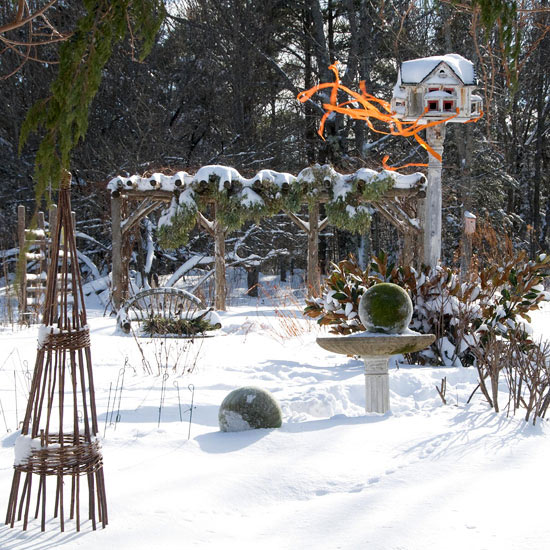
Vines no longer scramble up the garden towers and perennial flowers have long lost their color, but these upright elements continue to add interest to the winter landscape. When possible, allow perennial plants to stand in the garden through winter. They will provide food and shelter for wildlife and vertical interest to you as you gaze upon the garden.
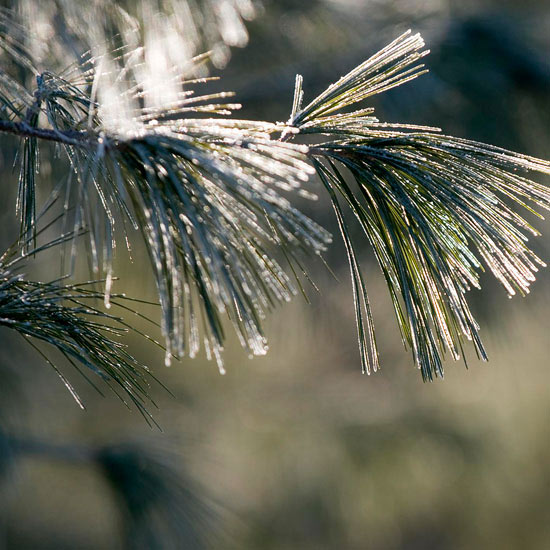
Trees and shrubs with evergreen foliage are the belles of the winter landscape. From the leathery leaves of evergreen ivy trees and shrubs to the soft needles of white pine, pictured here, evergreen plants add valuable texture to the landscape. Make a point to add several evergreen plants throughout your landscape.
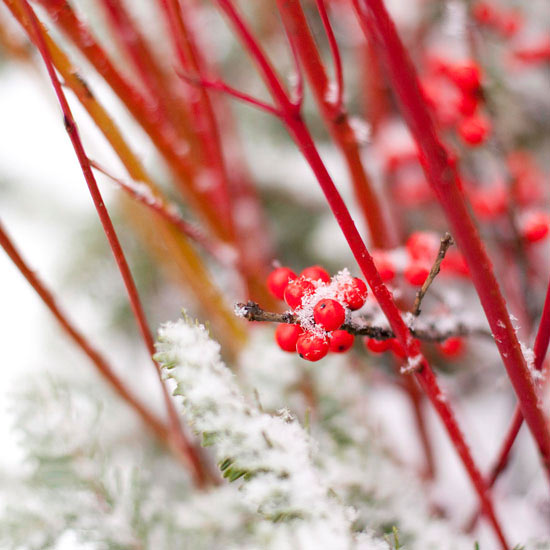
Twinkling light and snow are a winning combo every time. With shortened winter days, exterior lighting is enjoyable for several hours each evening. Here twinkle lights illuminate a twig structure. Use lights to decorate trees, shrubs, or container gardens.

A standout in the winter landscape, redtwig dogwood (Cornus sericea) sparkles with its red bark. (Also, look for unique yellow cultivars at the garden center.) Keep redtwig dogwood in top form by pruning away one-third of the canes each year. Select the old canes for pruning as young canes have the most intense coloration.
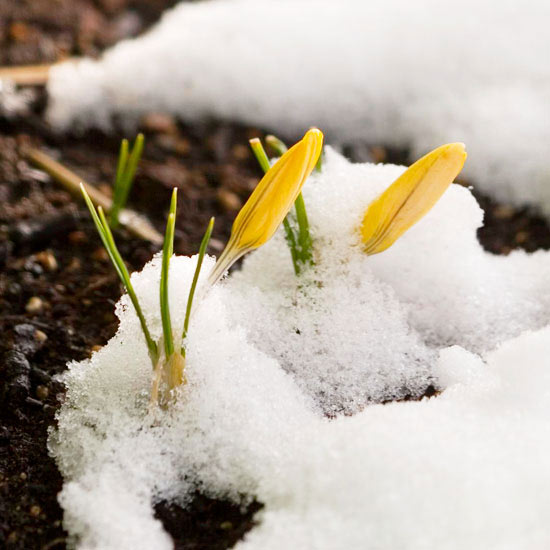
Spring is a welcome sight after months of bone-chilling temperatures and a gray-brown landscape. Regularly take time to stroll your landscape in search of signs of spring. Crocus and grape hyacinths are known to poke up through snow as if in celebration of the upcoming season. With close inspection you'll find many other signs of spring.
Copyright © www.100flowers.win Botanic Garden All Rights Reserved